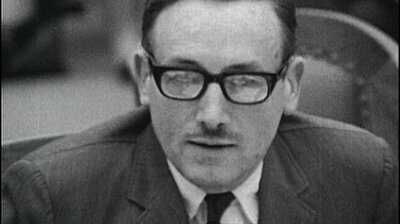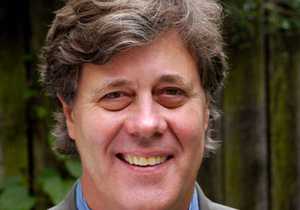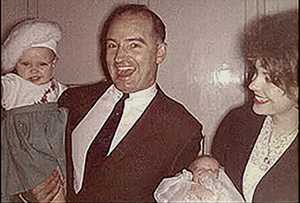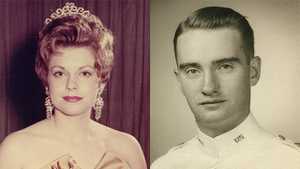They were from a different part of town, distrustful of university students and their alien culture. Madison police also lacked any riot training; no previous demonstrations had turned violent. When they were summoned on the University of Wisconsin campus for the first time in October 1967, that combination would have bloody consequences.

Campus Police
At the university, student demonstrations typically occasioned a police presence. But before October 1967, that presence was provided by the campus police force. Their chief, Ralph Hanson, was a natural diplomat who tried to understand where the students were coming from, taking sociology courses and reading books on youth alienation. He had taken the job in spring 1965, and his handling of prior campus protests earned high marks from university administrators and even some grudging respect from students, who would serenade him with a play on a popular Burt Bacharach song. "What's it all about, Ralphie?" they would sing. Hanson, who spent the hours before work painting and who never carried a gun, always got a kick out of that. As the Dow demonstrations approached, he did everything he could to minimize the possibility of violence.
Madison Police
The regular Madison police force, by contrast, had little or no rapport with the students. Most of them had grown up on the working-class side of town, and many had gone into the military after finishing high school. To them, the students were pampered anarchists. Detective Tom McCarthy, whose loose tongue and unorthodox methods had gotten him in hot water with the Madison police chief, used to ride the bus to work. One day when a longhaired antiwar student got on the bus, McCarthy told him they could drop an atom bomb on the university and he wouldn't care. Policeman Keith Hackett thought the students were trying to take over his country, and he wasn't about to let that happen.
Directed to Confront Students
On the morning of October 18, as the anti-Dow protest began, Hanson gathered a team of 20 campus police and 20 more off-duty Madison cops. No one had riot gear on, and Hanson told his team that the students were not "a hostile group." But although he kept his cool, Hanson was unable to convince the demonstrators filling the hallway of the Commerce building to disperse. He requested back-up from Chancellor William Sewell, who agreed that the Madison police could be summoned. This had never happened before, but town police had expected the call, and a squad of 30 men was ready to go. The Madison cops wore helmets and carried night sticks, and soon they arrived on campus. Hanson tried to broker a last-minute resolution, but student leaders were unable to agree on a compromise with Sewell. The Chancellor then directed the police to clear the protesters out.
Beatings with Billy Clubs
As student Jane Brotman recalled, Hanson got on a bullhorn and told the students they had two minutes to leave the building, but only a few seconds elapsed before police smashed the glass doors out front and stormed inside. Hackett, one of the 30 cops, had simply been ordered to clear the building; no one told him how it should be done. And he, like other Madison cops, had no riot training. But once the glass broke, as Hackett put it, "it was a matter of who's going to win." The police had all the billy clubs, and they started to use them, beating both male and female students on their heads, spines, and stomachs. It was, in Brotman's words, "the most brutal and violent thing I have ever witnessed."
Screaming Crowds and Bloody Wounds
Meanwhile, Detective McCarthy had stayed at police headquarters; he wanted nothing to do with the demonstrations. But when a superior ordered him to come down to the protest site, McCarthy went. As he arrived, a rock shattered the window of his car, and things quickly got worse. When McCarthy reached the Commerce building, the hallway had been cleared of students. But an even larger crowd surrounded the cops outside, screaming the Nazi salute Sieg Heil at them. As McCarthy stood there, a brick or shoe hit him in the nose and knocked him unconscious. He and 18 other policemen were taken to the hospital that day, along with 47 students.
No Remorse
The protests at Madison were the first student demonstrations to turn violent -- presaging the coming months of national turmoil over the Vietnam War. Yet, even though their superiors and the University of Wisconsin administrators considered what happened a fiasco, few of the cops involved showed any remorse. When McCarthy went to church that week and heard the priest suggest that people ought to start listening to the students, McCarthy walked out and never spoke to him again. And the cops who stormed Commerce came up with a nickname for themselves, "the Dirty 30," making patches that they wore on their uniforms for years to come.







